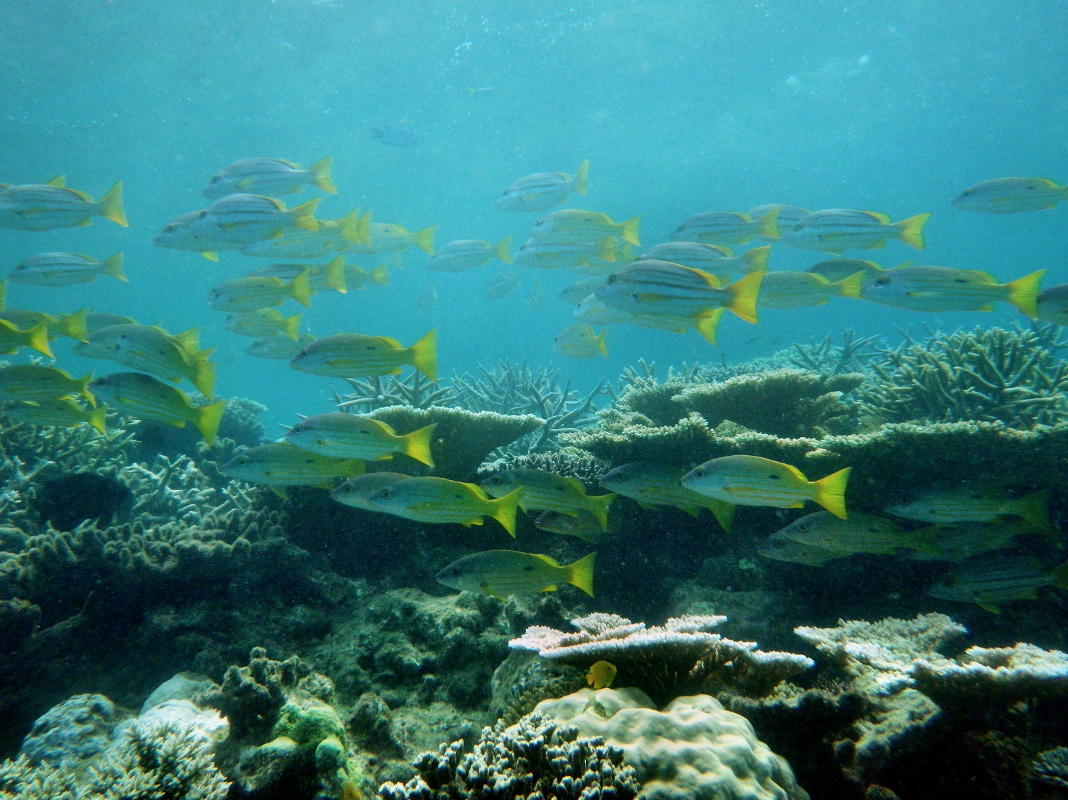With the pressing issues of climate change, The Great Barrier Reef is at risk of vanishing completely, but there are still ways to help.
Great Barrier Reef, Australia. @eutrophication&hypoxia. CC BY 2.0
Sprawling at a breathtaking 344,400 square kilometers off the Queensland coast in Australia is the world-famous Great Barrier Reef—known to be the largest coral reef system on the planet and home to thousands of different marine species. It’s a widely-visited tourist attraction and is often named one of the seven natural wonders of the world for its sparkling azure water and decorated rainbow of corals.
But with the recent climate crisis, things are changing, and the Reef is now at great risk. Within the past 30 years, it has lost half its coral cover and global warming has produced a horrific case of coral bleaching—a process where the water warms and corals expel the algae living in their tissues, turning the coral completely white. Without this algae, the coral isn’t able to get the nutrients it needs and will starve to death if water temperatures don’t return to normal.
Why are coral reefs so important to the world? First of all, the biodiversity living in these waters isn’t found anywhere else. It takes up just 1% of the ocean floor but 25% of all marine life calls the Great Barrier Reef their home. It also provides Australia with billions of dollars in economic value with the tourists it attracts. Not to mention, reefs are a great resource to use for medical treatments. Right now, the plants and animals found within are being used to develop potential cures for diseases like cancer and Alzheimer’s.
The Reef is home to countless marine species. Paul Toogood. www.Castaways.com.au. CC BY 2.0
We’re at a critical tipping point. If damage to the reef progresses as it is now, the Great Barrier Reef could be completely gone by 2050. With half a billion people depending on reefs for food and work, this would have staggering effects, and all of this relies on preventing climate change.
As discussed in the COP26 United Nations conference in 2021—the UN Climate Change Conference that brought together 120 world leaders—the Australian government and the entire world must work to limit warming to no more than 1.5 degrees Celsius, in order to keep coral reefs alive. At the current rate, temperatures are increasing at 2.4 degrees Celsius, and 99% of all coral reefs may be gone in the near future.
TO GET INVOLVED
However, the reef is not beyond saving. Visiting the tourist attraction may actually benefit the ecosystem since all visitors are required to pay an Environmental Management Charge, which goes toward the conservation of the reef. Learn more about the nonprofit organizations that raise money to conserve coral diversity, such as GBR Legacy, and maybe even consider donating.
The numerous and easiest ways to help save the Great Barrier Reef come from afar, starting with the changes that people can make in their everyday lives. With climate change comes rising temperatures on the land and in the oceans, which leads to increased carbon dioxide along with ocean acidification and coral bleaching. To remedy this, reducing plastic usage like bringing a reusable cup or installing solar panels to power our homes are both eco-friendly and may save money in the long run.
Michelle Tian
Michelle is a senior at Boston University, majoring in journalism and minoring in philosophy. Her parents are first-generation immigrants from China, so her love for different cultures and traveling came naturally at a young age. After graduation, she hopes to continue sharing important messages through her work



